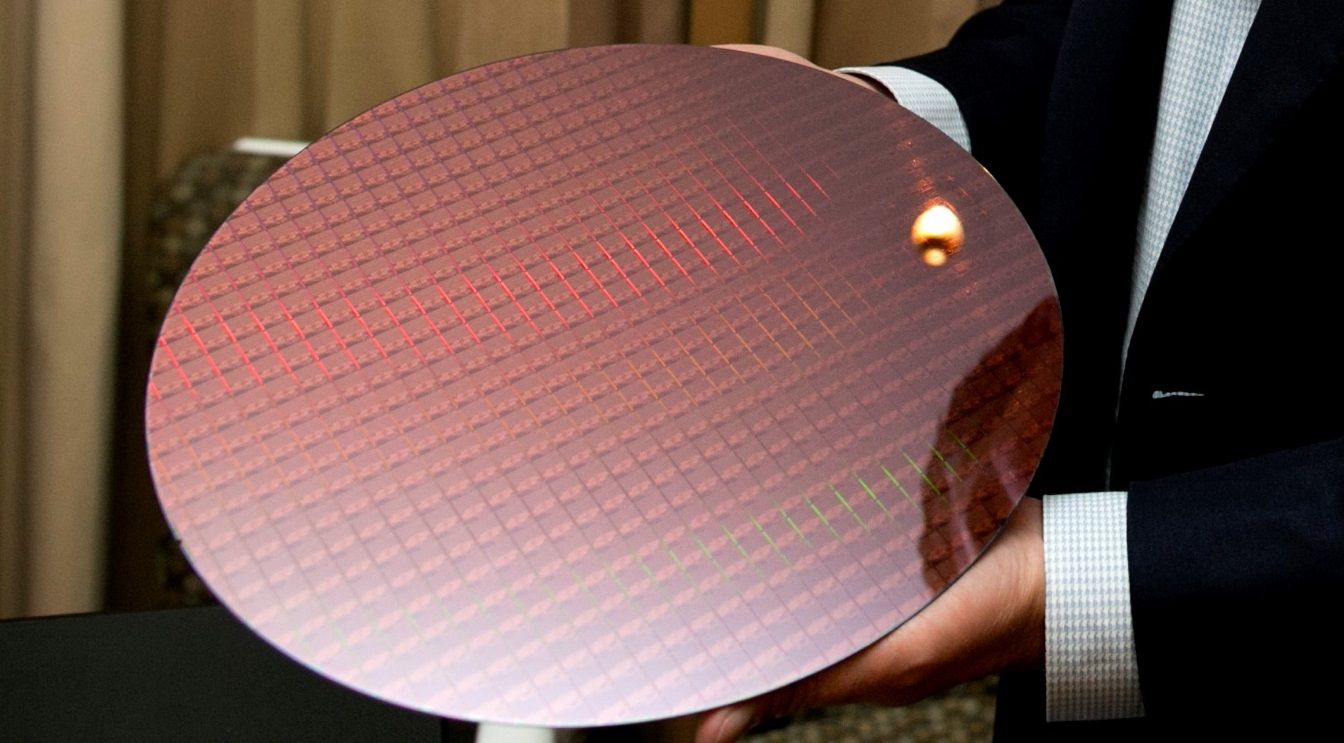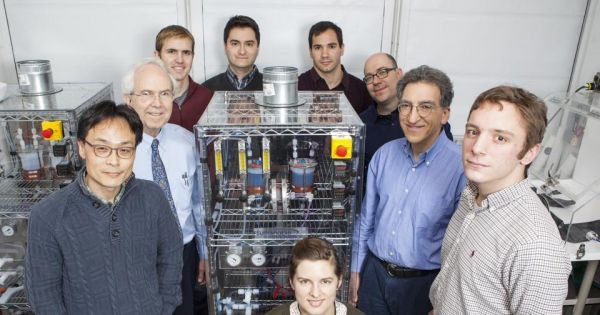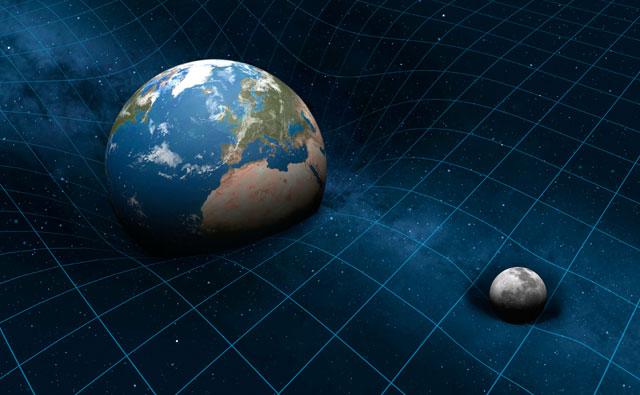Page 10560
Sep 7, 2016
The Next Wave of Deep Learning Architectures
Posted by Bruno Henrique de Souza in categories: computing, cosmology, robotics/AI
Intel has planted some solid stakes in the ground for the future of deep learning over the last month with its acquisition of deep learning chip startup, Nervana Systems, and most recently, mobile and embedded machine learning company, Movidius.
These new pieces will snap into Intel’s still-forming puzzle for capturing the supposed billion-plus dollar market ahead for deep learning, which is complemented by its own Knights Mill effort and software optimization work on machine learning codes and tooling. At the same time, just down the coast, Nvidia is firming up the market for its own GPU training and inference chips as well as its own hardware outfitted with the latest Pascal GPUs and requisite deep learning libraries.
While Intel’s efforts have garnered significant headlines recently with that surprising pair of acquisitions, a move which is pushing Nvidia harder to demonstrate how GPU acceleration (thus far the dominant compute engine for model training), they still have some work to do to capture mindshare for this emerging market. Further complicating this is the fact that the last two years have brought a number of newcomers to the field—deep learning chip upstarts touting the idea that general purpose architectures (including GPUs) cannot compare to a low precision, fixed point, specialized approach. In fact, we could be moving into a “Cambrian explosion” for computer architecture–one that is brought about by the new requirements of deep learning. Assuming, of course, there are really enough applications and users in a short enough window that the chip startups don’t fall over waiting for their big bang.
Continue reading “The Next Wave of Deep Learning Architectures” »
Sep 7, 2016
Here’s what an eclipse looks like from a plane
Posted by Shailesh Prasad in category: transportation
Sep 7, 2016
Dobby Selfie-Drone: Hands-On
Posted by Shailesh Prasad in categories: drones, entertainment
Sep 7, 2016
From this point forward, all Intel and AMD CPUs are Windows 10-only
Posted by Shailesh Prasad in category: computing
Keep in mind as you plan your hardware purchases — AMD CPUs, APUs, and Intel CPUs are all Windows 10-only from this point forward. AMD GPUs will continue to support Windows 7 and 8 for now, though we don’t know when the company will terminate this.
Sep 7, 2016
For First Time Ever, Carbon Nanotube Transistors Have Outperformed Silicon
Posted by Shailesh Prasad in categories: computing, nanotechnology
![]()
In an attempt to bring the next generation of computers to life, teams around the globe have been working with carbon nanotubes — one of the most conductive materials ever discovered. Now, for the first time ever, scientists made a transistor using carbon nanotubes that beats silicon.
For the first time, scientists have built a transistor out of carbon nanotubes that can run almost twice as fast as its silicon counterparts.
Continue reading “For First Time Ever, Carbon Nanotube Transistors Have Outperformed Silicon” »
Sep 7, 2016
The first ever copies of the ‘world’s most mysterious book’ are about to be released
Posted by Shailesh Prasad in category: habitats
A Spanish publishing house has finally been given permission to make exact copies of the Voynich Manuscript — a 15th century book written in a mysterious coded language that no one has cracked.
For centuries, scientists have been trying to decipher the text. Some of the world’s best cryptographers have dedicated their lives to solving the puzzle — but no one’s even gotten close. Now, with almost 900 copies about to go into circulation, we might finally get some answers.
“The Voynich Manuscript has led some of the smartest people down rabbit holes for centuries,” Bill Sherman from the Folger Shakespeare Library told The Washington Post in 2014, when he was about to open an exhibit on the text.
Sep 7, 2016
This Water Battery Will Change the Way We Harness the Sun’s Energy
Posted by Shailesh Prasad in categories: solar power, sustainability
Researchers design aqueous battery that stores solar energy better than current lithium technology.
Batteries based on water that can store the electricity that we generate from solar technology? It can now be done.
Researchers at Ohio State University have designed a device with an aqueous flow battery that is based on water as opposed to the standard lithium design of your average rechargeable batteries. It is the first aqueous flow battery to work with a solar cell and it is 20 percent more efficient than the lithium design.
Sep 7, 2016
Scientists study effects of extra space dimensions in particle physics and cosmology
Posted by Andreas Matt in categories: cosmology, particle physics
There are many theoretical models to explain such aspects of high energy physics as dark matter, theory of inflation, bariosynthesis, the Higgs mechanism, etc. The discovery of universal expansion is accelerating, precise measurements of characteristics of the cosmic microwave background, and indirect confirmations of the existence of dark matter have significantly advanced observational and theoretical cosmology. The connection between cosmological processes in the early universe and physics of elementary particles is getting clearer. Theories with additional compact measurements (multidimensional gravity) have contributed to the explanation of a series of phenomena in cosmology and the physics of elementary particles including inflation, baryon asymmetry, black holes and dark matter. Multidimensional gravity may become one of the basics of fundamental theoretical physics.
The development of colliders led to the discovery of a number of new particles, which was a great confirmation of the Standard Model ℠ of particle physics. The real SM triumph was the discovery of the Higgs boson in LHC experiments in CERN. However, despite the success of SM in high-energy physics, there is a series of questions and problems that can’t be explained by it—for example, baryon asymmetry, the origin of the Higgs field, the production of the early quasars, etc.
A theoretical direction, which is based on the idea of multidimensional gravity, is being developed at the MEPhI Department № 40 under the supervision of Professor S.G. Rubin. For the past several years, interesting results have been obtained on the basis of this research. In a thesis by Alexey Grobov titled “Effects of extra spaces in particle physics and cosmology,” multidimensional gravitational models contribute to better understanding of connections between astrophysics and microphysics phenomena.

















